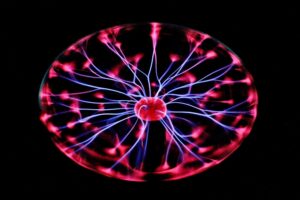Science has undoubtedly transformed the world we live in, pushing humanity forward by leaps and bounds. From groundbreaking discoveries that have cured diseases to inventions that have revolutionized how we communicate with each other, science continues to shape our lives in countless ways. In this article, we’re going to take a look at 10 amazing scientific discoveries that have left an indelible mark on society as a whole. So buckle up and prepare for a fascinating journey through some of the most important moments in human history!
The discovery of penicillin
In 1928, Alexander Fleming made a discovery that would change the world: penicillin, the first antibiotic.
Fleming was studying bacteria when he noticed that one of his cultures had been contaminated by a mold. The mold had killed the bacteria, but Fleming was intrigued. He isolated the active ingredient in the mold, which he named penicillin, and showed that it could kill a range of bacteria.
Penicillin was first used to treat humans in 1942, and it has since saved millions of lives. It is one of the most important medical discoveries of all time.
The discovery of the double helix structure of DNA
In 1953, two young scientists named James Watson and Francis Crick made one of the most important scientific discoveries of all time: the double helix structure of DNA.
This discovery was so important because it helped us to understand how genes are passed down from one generation to the next. Prior to this discovery, it was believed that genes were made up of proteins. But Watson and Crick’s discovery showed us that genes are actually made up of DNA.
This was a monumental discovery that changed the way we think about genetics and inheritance. It also paved the way for future discoveries in the field of molecular biology.
The discovery of the link between smoking and cancer
In 1964, the U.S. Surgeon General released a report that concluded smoking cigarettes was a cause of lung cancer. This was a monumental discovery at the time, as it was the first time a link had been established between smoking and cancer.
Since then, we have learned even more about the dangers of smoking cigarettes. We now know that smoking is linked to numerous types of cancer, including throat, mouth, lung, stomach, pancreatic, and bladder cancer. Smoking is also linked to other health problems like heart disease, stroke, and emphysema.
Despite all of this knowledge, millions of people around the world continue to smoke cigarettes. Quitting smoking is one of the most important things you can do for your health, but it’s not always easy. If you’re struggling to quit smoking, there are plenty of resources available to help you succeed.
The discovery of the Big Bang theory
In the early 1900s, scientists were just beginning to understand the nature of the universe. At that time, it was widely believed that the universe was static and infinite. However, in 1927, a Belgian priest and scientist named Georges Lemaitre proposed the theory that the universe is expanding. This theory was based on observations of distant galaxies moving away from each other.
In 1929, an American astronomer named Edwin Hubble discovered that these distant galaxies are indeed moving away from us at a constant rate. He also found that the further away a galaxy is, the faster it is moving away from us. This discovery supported Lemaitre’s theory and led to the development of the Big Bang theory.
The Big Bang theory states that the universe began as a very small, dense point known as a singularity. Over time, this singularity expanded and cools, leading to the formation of stars, galaxies, and ultimately our entire universe. The theory explains how we can see objects that are billions of light years away from us; because they are so far away, we are seeing them as they were in the past when the universe was much younger.
Today, the Big Bang theory is widely accepted by scientists as the best explanation for how our universe came to be. It has been supported by numerous observations and experiments, and continues to be refined as we learn more about our universe.
The discovery of the existence of black holes
It was Einstein’s theory of general relativity that led to the prediction of the existence of black holes. In 1916, Einstein published his seminal paper on the theory, which described how massive objects could warp spacetime. This warping of spacetime would cause objects to move in ways that didn’t make sense according to Newton’s laws of motion. One of the most famous examples of this is the orbit of Mercury around the sun.
Einstein’s theory also predicted that there could be regions of spacetime where gravity was so strong that not even light could escape. These regions are what we now know as black holes. The first black hole was discovered in 1971 by astronomers using radio telescopes. They observed a star in the constellation Cygnus that was behaving very oddly. The star, known as Cygnus X-1, was emitting large amounts of X-ray radiation and it was clear that something strange was going on.
Further observations showed that Cygnus X-1 was orbiting a massive object, which could only be a black hole. This discovery proved that black holes really do exist and helped to solidify Einstein’s theory of general relativity as one of the most important theories in physics.
The discovery of the Higgs boson
In 2012, scientists at the Large Hadron Collider (LHC) announced the discovery of the Higgs boson, a long-sought particle that helps explain why matter has mass. The discovery was hailed as one of the most important in physics, and it earned physicists Peter Higgs and François Englert the Nobel Prize in Physics in 2013.
The discovery of Neptune
In 1846, Neptune was discovered by German astronomer Johann Galle. He used a telescope to look for an object that had been predicted to be in that location by French mathematician Urbain Le Verrier. The planet was officially named Neptune on September 24, 1846, after the Roman god of the sea.
This discovery was significant because it proved that Newton’s laws of motion and gravitation could explain the motions of bodies in the solar system beyond just Earth and the Sun. It also helped to solidify the understanding of celestial mechanics.
The discovery of Pluto
The discovery of Pluto in 1930 was a watershed moment in the history of astronomy. It was the first time that a new planet had been discovered in centuries, and it upended our understanding of the solar system.
Pluto was discovered by Clyde Tombaugh, an amateur astronomer who was hired by the Lowell Observatory to conduct a planet-hunting survey. He found Pluto after painstakingly comparing photographs of the night sky taken weeks apart.
The discovery of Pluto led to a greater understanding of the solar system and our place in it. It also sparked debate about what qualifies as a “planet”, which continues to this day.
The discovery of dark matter
In the 1930s, astronomer Fritz Zwicky was studying the motions of galaxies within clusters and noticed something strange:
They appeared to be moving faster than what could be explained by the laws of gravity.
He concluded that there must be some kind of invisible matter – now known as dark matter – making up most of the mass in the universe.
This discovery completely changed our understanding of how galaxies are held together and how they evolve over time.
The discovery of gravitational waves
In 2015, the world was stunned by the news that gravitational waves had been discovered.
This discovery was made by the Laser Interferometer Gravitational-Wave Observatory (LIGO).
This is a large-scale scientific experiment designed to detect gravitational waves.
The discovery of gravitational waves was a major breakthrough in our understanding of the universe.
These waves are ripples in spacetime that are produced by massive astronomical events, such as the collision of black holes.
The detection of gravitational waves allows us to study these events in ways that were previously impossible.
The discovery of gravitational waves has already led to some amazing scientific discoveries.
For example, in 2017, LIGO detected the collision of two neutron stars for the first time ever.
The event allowed astronomers to study the properties of neutron stars in unprecedented detail.
The discovery of gravitational waves is just the beginning of a new era of astronomy.
With further development, we will be able to use these waves to study some of the most violent and energetic events in the universe.
Conclusion
From the discovery of DNA to the invention of vaccines, these amazing scientific discoveries have changed our world.
The impacts are for the better and in countless ways.
Without them, we wouldn’t be able to enjoy the comforts and convenience that modern life provides us with today.
These incredible discoveries certainly deserve recognition and thanks from all of us.
With each new discovery comes a new opportunity to move towards a healthier and more prosperous future.








